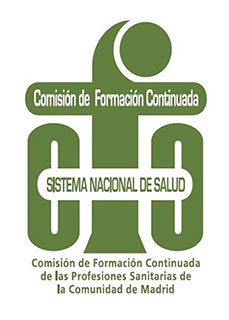Course on Basic Statistics for Health Professionals

How to obtain relevant information from your data
The need to learn to handle statistical software to manage and analyze health data requires prior theoretical knowledge and the practical application in order to optimize the processes of interpretation of results and scientific texts. All this in order to apply and learn about the new data analysis techniques implemented in medical and health practice with a praxis based on scientific evidence.
It is also necessary to know common management tools such as Excel, SPSS and Stata programs to be able to decide on their use in our professional practice, including the interpretation and comparison of results lists with the different tools used.
Curriculum
Basic statistics for professionals
- Session 1: Introduction: Methods, Designs and statistics. Basic concepts: sampling, measurement and variables.
- Session 2: Descriptive data analysis: tabulations and graphic representations.
- Session 3: Exploratory analysis of quantitative data.
- Session 4: Statistical inference: how to estimate a population mean. Hypothesis testing.
- Session 5: Probability Distributions. What do we mean when a result is statistically significant?
- Session 6: Relationship between two qualitative variables: Risk, Chi square.
- Session 7: Relationship between two quantitative variables: Covariation, correlation and simple linear regression.
- Session 8: Relationship between a qualitative and quantitative variable: Student's t test and Analysis of variance.
- Session 9: Estimation of the sample size.
- Session 10: Description of statistical models for more than two variables.
Professors
 Juan Martín Aliaga Ugarte
Profesor
Juan Martín Aliaga Ugarte
Profesor
More Academic Info
Aimed at:
Competences
At the end of the course, the professional healthcare student will acquire the minimum knowledge and skills to:
- Be able to recognize the basic theoretical requirements of any statistical analysis and how to relate them to the software used.
- Know how to analyze the characteristics of applied research designs and their relationship with data analysis techniques.
- Know and recognize the different essential aspects in the calculations of basic descriptive and inferential statistics.
- Interpret the most common statistical indexes in medical scientific publications.
- Know how to decide which is the appropriate statistical test for the different objectives proposed by applying descriptive statistics and univariate and bivariate inferential statistics.
- Recognize the limits of the most common interpretation of results in health sciences.
Objectives
Provide health professionals with the statistical knowledge necessary for the use of the different statistical software packages on the market, focusing learning on the knowledge that deepens the interpretation of the procedures and the results obtained.
Teaching methodology
- The course is taught online through the virtual classroom of Nebrija Global Campus. The lectures scheduled in a calendar previously communicated to the students are broadcast live with the professor's initial teaching presentation and later an interaction with the students to answer questions and pose clinical cases.
- Live virtual classroom sessions with slide support.
- Teaching material and bibliography provided by teachers.
- Exercises for students with follow-up.
- Personalized online tutorials.
- Evaluation:
- Presentation of a statistical report with conclusions by the students (object of study or analysis to be chosen freely) in a Word document, which includes the description of a research plan with the operationalization of the variables and the presentation of the final results.
- Post-training Survey on Satisfaction of Expectations.


